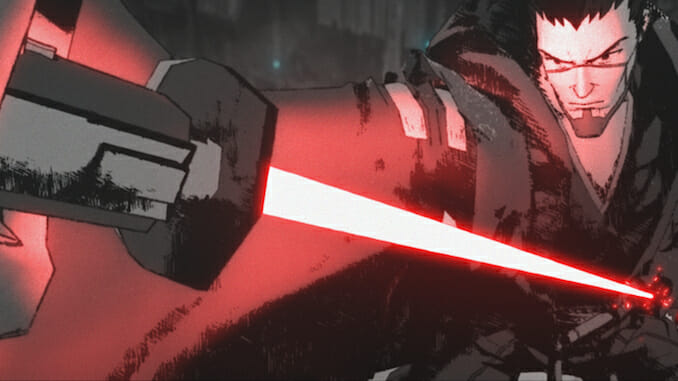Disney+’s Imaginative Star Wars: Visions Finally Acknowledges Japan’s Influence on Star Wars
Photo Courtesy of Disney+
When the movie Star Wars (just “Star Wars,” before there were any episodes) came out in 1977, it was something new made out of a whole lot of things that were old. Luke Skywalker was tinkering with droids and piloting a starfighter, but he was also an Arthurian hero. Han Solo flew a spaceship and had an alien sidekick, but he was also a gunslinger out of Hollywood’s Wild West. The rebels were fighting the Empire with dogfights right out of post-WWII movies.
The other major influence is one that’s imprinted deeply in everything from the Jedi and their lightsabers to the tale of a rebel princess and her defiance of an evil warlord, even down to the morality that underpins every story: Star Wars was a samurai film.
Despite the depth of Asian influences on Star Wars—from its Zen and Manichaean-like understanding of the mystical Force to the ascetic, robe-wearing Jedi and their sword duels—it often feels the association isn’t given its due. There have been very few Asian actors in starring or spoken roles in the movies: Rogue One has the most in a walk, but they all die. Kelly Marie Tran’s character Rose was built up in The Last Jedi and then promptly sidelined in the as-of-now final film, The Rise of Skywalker. George Lucas pushed for the inclusion of Toshiro Mifune in the first film, but couldn’t get him, so the two most samurai characters in the movies, Obi-Wan Kenobi (who amputates ruffians who give him shit with his sword) and Darth Vader (who wears robot samurai armor) were portrayed by non-Asian actors.
As I wrote before, one of the things I had hoped for out of the latest trilogy of films, that I felt wasn’t delivered on, was bringing more Asian actors into a series so deeply indebted to Eastern themes.
Disney+’s Star Wars: Visions feels like it’s a direct answer to that plea, bringing together top Japanese animation talent to tell the kind of stories Star Wars has always had the ability, but not the support, to tell. With J-rock concerts, child robots, rabbit-folk Jedi, and so many lightsaber duels, the nine short episodes reunite Star Wars with itself by finally giving one of its major cultural influences free rein to reimagine the galaxy far, far away.
Star Wars: Visions episodes average a little under 20 minutes each, taking just enough time to set up a scenario, introduce characters and conflict, and end in explosive action. Throughout, audiences will get a pretty good sampling of different anime styles that also reflect Star Wars’ forebears and the kind of action that’s sprung up in its wake that really, really should have been incorporated into it by now. If Star Wars films are going to keep edging closer and closer to shonen anime anyway, they may as well let the masters have a turn.